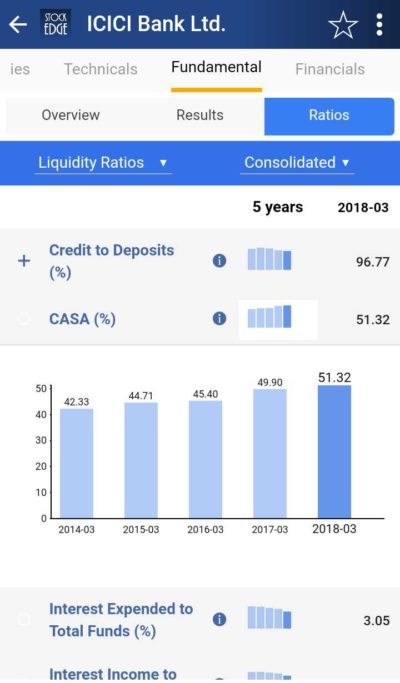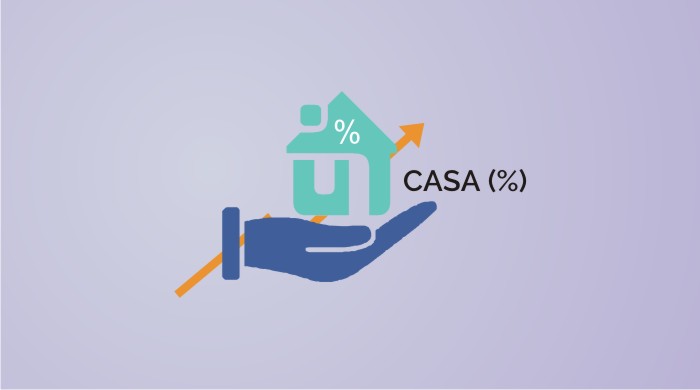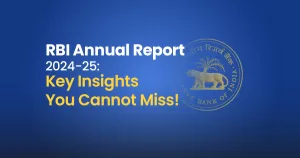Table of Contents
We’ve all heard about savings accounts and current accounts, but do we really know what they are? It’s like they’re the popular kids in school that everyone talks about but no one really understands.
Basically, a savings account is like a piggy bank for individuals, while a current account is like a piggy bank for companies. But here’s the catch: the savings account gets to earn interest, while the current account gets nothing. Tough luck for the company piggy bank!
Now, let’s talk about the CASA ratio. It’s like the ultimate popularity contest for banks – the higher their CASA ratio, the cooler they are. This ratio measures the total deposits in relation to current and savings accounts. Now let us go down the rabbit hole! Shall we?
Watch the video below on Everything you want to know about CASA Ratio:
What is CASA Ratio?
The CASA ratio indicates how much of a bank’s total deposits are in current & savings accounts. A higher ratio means a larger portion of a bank’s total deposits are in current and savings accounts, thus indicating, lower cost of funds. Which means the higher the deposits in both of these accounts the lower will be the cost of managing the funds. Banks pay interest at 3-4% on savings deposit which is way below its lending rate thus decreasing the cost. For instance, most banks lend at over 10%, whereas, the rate of interest that they pay on savings deposits is just 3-4%.
See also: Interest Income to Total Funds (%)
Importance of CASA Ratio
If a large part of a bank’s deposits comes from these funds, it means that the bank is getting those funds at a relatively lower cost. It is generally understood that a higher current account and savings account ratio leads to higher net interest income because the interest paid on CASA deposits is lower than on term deposits hence the NII tends to be higher. Therefore, the higher the ratio, the better the net interest margin, which means better operating efficiency of the bank. Current account and savings account deposits are a cheaper source of raising funds as compared to a certificate of deposits, term deposits which relatively requires higher interest to be paid.
CASA Ratio Formula
CASA Ratio (%) = CASA Deposits/Total Deposits
Explanation
Suppose a bank ABC has total deposits as Rs. 50,000 crore and savings account deposits is Rs. 15000 crores and current account deposits are Rs. 8,000 crores.
CASA Ratio (%) = (15000+8000)/50000 = 46%
Thus, the ratio of the bank is 46% which means 46% of total deposits are contributed by low-cost CASA deposits.

StockEdge App
Nowadays we can easily calculate CASA ratio (%) with the help of a reliable stock market analysis tool. The StockEdge app gives us the CASA ratio of the last five years of any banks listed in the stock exchange. We can look and compare it and filter out stocks accordingly.
Suppose we want to look at CASA ratio of ICICI Bank Ltd. for last 5 years, then in the Fundamental tab of ICICI Bank Ltd., we will get Ratios tab. Then in the Ratios tab click on the Liquidity Ratios, we will get the CASA ratio (%) of ICICI Bank Ltd.
The downside of CASA (%)
For long–term financing of big Projects, Banks major focus is on term deposits as depositors may not like to withdraw the deposit before the maturity, this is because current and savings account deposits can move out of the bank’s books anytime which can lead to asset-liability mismatch. Banks can improve CASA ratio by offering a higher rate of interest on deposits which can attract more deposits, on the other hand, it will have to pay higher interest rates to the depositors.
Frequently Asked Questions
How is CASA ratio calculated?
CASA Ratio (%) = (CASA Deposits/Total Deposits). Suppose a bank ABC has total deposits as Rs. 50,000 crore and savings account deposits is Rs. 15000 crores and current account deposits is Rs. 8,000 crores. CASA Ratio (%) = (15000+8000)/50000 = 46%. Thus, the CASA ratio of the bank is 46% which means 46% of total deposits are contributed by low-cost CASA deposits.
Why CASA ratio is important?
A higher CASA ratio means higher portion of the deposits of the bank has come from current and savings deposit, which is generally a cheaper source of fund. Many banks don’t pay interest on the current account deposits and money lying in the savings accounts attracts a mere 3.5% interest rate. Hence, higher the CASA ratio better the net interest margin, which means better operating efficiency of the bank. Net interest margin is difference between total interest income and expenditure and is shown as a percentage of average earning assets. Higher income from CASA will improve the net interest margin as the cost of this fund is relatively lower. For instance, most banks lend at over 10%, whereas, the rate of interest that they pay on saving deposit is just 3.5%..
How do you increase CASA ratio?
Banks can increase CASA ratio by offering a higher rate of interest on deposits which can attract more deposits, on the other hand it will have to pay higher interest rates to the depositors.
What is ideal CASA ratio?
There is no defined ideal ratio. Private lender HDFC Bank disclosed that its advances in September quarter grew 16% and deposits rose at 20% year-on-year. Similarly current account savings account (CASA) ratio of bank grew 270 basis points year-on-year to 42% during the September quarter.
Bottomline
CASA (%) of any bank is an important financial component to look at when analyzing a Bank. It tells us about the profitability and operating efficiency of a bank. With a click of a button, you can see the bank’s CASA ratio (%) for five years.
And comparing this ratio with other banks will help to get a better picture along with other important banking ratios such as NIM, Cost of liabilities (%), which can help in your analysis and take a better judgment whether to invest or not.
Click here to know more about the Premium offering of StockEdge.
You can check out the desktop version of StockEdge using this link.









Casa interest earned process has not discussed in this article. please send the details.
Very nice information , I understand very well about CASA Ratio, the illustration is very good.
Your efforts are noteworthy for me
ThanQ